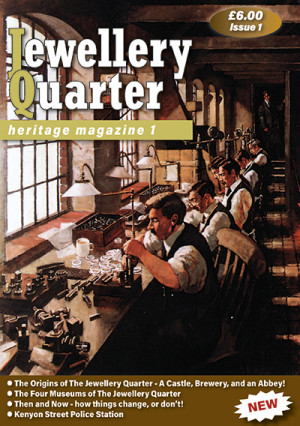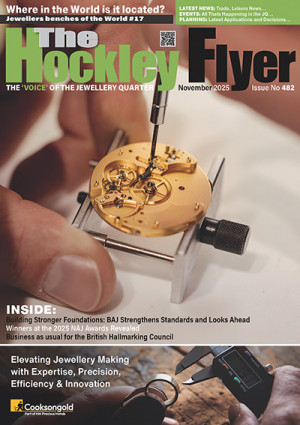 The issue of tarnishing has always been a problem for the silver and jewellery trade and its customers and the urgent, frenetic lifestyle of so many people in the 21st Century allows little time for continual cleaning and polishing of jewellery, ornaments or cutlery.
The issue of tarnishing has always been a problem for the silver and jewellery trade and its customers and the urgent, frenetic lifestyle of so many people in the 21st Century allows little time for continual cleaning and polishing of jewellery, ornaments or cutlery.
As a result, there is more and more pressure to create ‘tarnish-free silver’. Tarnishing of silver is a result of its reaction with sulphur-containing gases and oxygen and chlorides in the atmosphere. This creates silver sulphide – the visible black residue which appears on the surface of the metal.
Tarnishing is also accelerated by other factors including perspiration, perfume and deodorant spray and some foodstuffs, such as fruit juice, pickles and garlic, also release high levels of acid and/or sulphur compounds.
Organic sulphur-containing compounds present in the material of storage boxes, particularly in the glue, are yet another known cause of severe tarnishing.
In response to this problem and the many queries being raised by customers, Dippal Manchanda, Director of The Laboratory at The Birmingham Assay Office and his research team have carried out major investigations into the causes and prevention of tarnishing. As a result of this work, a range of tests to determine susceptibility to tarnishing has been available from The Birmingham Assay Office since 2005.
Their expertise in this area has progressed continually, driven by manufacturers seeking to produce silver products which do not tarnish. This can now be achieved either by finishing a product with an anti-tarnish treatment or by creating a tarnish-resistant alloy and several companies are now using these solutions to an age old problem. Other major manufacturers are now seeking advice from The Laboratory and two further significant tarnishing projects are currently under way.
Dippal’s status as an international expert on tarnishing was recognised at the Santa Fe Precious Metal Symposium when he was invited to respond to questions from other experts in the trade. However, the new developments are no help to those who already possess silver which does tarnish. So what is the answer?
Curator Dr Sally Baggott, who is responsible for The Birmingham Assay Office’s exceptional Silver Collection has the following advice: “Ideally, silver should be cleaned as little as possible to avoid wearing away the metal itself, surface decoration, and, of course, the all-important hallmark.
Try to keep silver in drawers, cases or cabinets so that the air which contains the substances which cause tarnishing is excluded as far as possible. “If you do need to clean it, always use a soft cloth to avoid scratching with a good but gentle proprietary silver polish, preferably one that contains tarnish-inhibitors to reduce the need for cleaning.”



